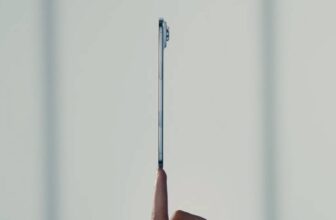Abstract
- Remember to cache offline maps, bookings, and itineraries not only for the locations you are headed, however anyplace cell sign is perhaps weak or absent.
- Obtain any music, movies, and podcasts you may want effectively upfront of any journey. Do not overload your storage, however do not give your self too little content material to stave off boredom, both.
- If you understand an space would not have enough cell protection, you may as effectively flip off your cellphone’s mobile radios. On lengthy journeys, that additional energy can turn out to be useful.
I spent effectively over a decade residing in Texas. For outsiders, it is nearly troublesome to clarify how numerous the state will be. Politically, for example, a lot of the state is deep crimson, however locations like Austin and Houston will be surprisingly liberal. That range extends to its panorama. Whereas the Hill Nation is comparatively lush, you will discover swamps and seashores within the south, and pure desert out within the west. Connecting all of it are big stretches of freeway, punctuated by rural cities which can be typically barely clinging on to existence.
All that is to say that I am used to driving for hours via areas which have little to no mobile sign — T-Mobile is not significantly involved about bringing 5G to the outskirts of Giddings. Since I am not keen to drag out a paper map and tune into AM radio, I’ve developed quite a lot of techniques for coping with mobile wastelands that ought to maintain a visit rolling alongside easily, whether or not you are in Texas, Toledo, or Ontario.
Cache your music, podcasts, and video effectively upfront
Be able to dodge boredom
One in all my best annoyances when driving via rural Texas was Spotify all of a sudden pausing as a result of I forgot to cache the playlist I used to be listening to. If I did not have any saved podcasts, or music synced from my pc, I would find yourself driving in silence till a cell sign returned. There’s not a lot radio price listening to between Austin and Houston, I am going to let you know that.
You most likely should not cache your whole music and podcasts — that may eat dozens and even lots of of gigabytes — however you must have sufficient materials to keep away from extreme repeats. In truth, I am going to usually construct playlists particularly for journey, like my At Sea assortment. That provides me one thing mood-setting to hearken to whereas leaving loads of room for all these photographs and movies I am sure to shoot.
Watch out about caching motion pictures and TV reveals — you may like the thought of getting a whole TV collection helpful, however video is much more storage-hungry than music, and it is easy to overestimate the quantity of free time you will have. It is most likely pointless to cache any video if all you are doing is heading out on a one-day street journey.
No matter you propose to obtain, do not go away it till the final minute. Absent-mindedness or a sluggish Wi-Fi hotspot may intrude along with your plans.
Cache as many offline maps as you possibly can
No surprises, please
It is a rookie mistake to assume you are good for the remainder of a visit in case you have a robust connection while you begin navigation and maintain your app of selection in current reminiscence. Not so — whereas all navigation apps cache a specific amount of geography mechanically, they’re nonetheless fetching information as you go, particularly on lengthy drives. Additionally, you by no means know when and the place you will must make a pit cease.
Your prime precedence, then, ought to be to avoid wasting offline navigation information for as a lot of your route as your cellphone has house for. In Google Maps, this is so simple as looking for an space and discovering the Obtain offline map button in its information card. In Apple Maps, you will need to faucet in your profile icon, then Offline Maps > New to select a location. If you have already got some areas saved, be sure to replace them earlier than you head out.
Your prime precedence ought to be to avoid wasting offline navigation information for as a lot of your route as your cellphone has house for.
Additionally, you should definitely save a number of maps should you want detailed instructions. That is as a result of the broader your view is, the much less data an app is prone to retailer. It is perhaps nice to avoid wasting a zoomed-out view of the interstate, however you will desire a city-specific map for determining the right way to get to a resort or airport.
Do issues the old style manner (form of)
Like lots of you, I assume, I rely closely on on-line companies to prepare my day by day life. If a chunk of data I want is not in electronic mail, it is most likely stashed someplace like Google Hold or iCloud Notes. If I’ve booked a flight, occasion, or resort keep, I most likely did it on the internet or via a cell app.
Generally, although, you want that sort of data offline simply as a lot as you do driving instructions. It is perhaps the main points of your airplane ticket, or the itinerary for a port tour. Maybe the worst factor is needing an deal with — Google Maps cannot prevent if you do not know the place you are going within the first place.
If one thing is crucial to your journey, be sure it is saved someplace in your cellphone, or on paper in case you have entry to a printer. In terms of digital copies, I exploit note-taking apps, or just screenshots of related apps or net pages. If I am particularly paranoid, I am going to maintain each paper and digital variations of things.
For me, that tends to be tickets, itineraries, and reserving numbers. Purchase a street atlas should you do not need to depend upon cellphone navigation.
Use the chance to preserve energy
Chances are you’ll want the juice on the opposite finish
The three most power-hungry elements of a smartphone are its processor, its show, and its wi-fi radios. That final one may initially appear unusual, however even when a radio is not actively transmitting information, it nonetheless must establish close by entry factors. Mobile radios specifically are consistently looking for towers, gearing as much as transition you as one sign will get weak and one other turns into sturdy. You have most likely been switched between towers many instances with out noticing a second of downtime.
In case you’re not driving, you may as effectively activate Low Energy Mode (on iPhones) or Battery Saver (on Android) to stretch your cellphone so far as doable.
If you understand an space would not have protection (and you have already acquired all of the offline information you want) you may as effectively flip mobile off till you are again in civilization. On an iPhone, swipe down from the highest of your display screen to open Management Heart, then faucet on the mobile bars icon, which ought to be highlighted in inexperienced. You may discover one thing comparable in Android’s Fast Settings, although the look of the icon might fluctuate from gadget to gadget.
This tactic is especially helpful on the longest journeys, equivalent to my flights to see family and friends on the opposite facet of the continent. These are likely to push battery life to the boundaries, and after they do not, it is nonetheless good to have some energy in reserve in case issues go sideways. In case you’re not driving, you may as effectively activate Low Energy Mode (on iPhones) or Battery Saver (on Android) to stretch your cellphone so far as doable. You’ll find these beneath your Settings app’s Battery menu if there is not a Management Heart or Fast Settings shortcut.
Trending Merchandise

Wi-fi Keyboard and Mouse Combo, 2.4G Silent Cordle...

Wireless Keyboard and Mouse Combo, EDJO 2.4G Full-...

ASUS RT-AX1800S Dual Band WiFi 6 Extendable Router...

TopMate Wi-fi Keyboard and Mouse Extremely Slim Co...

ASUS RT-AX88U PRO AX6000 Dual Band WiFi 6 Router, ...













